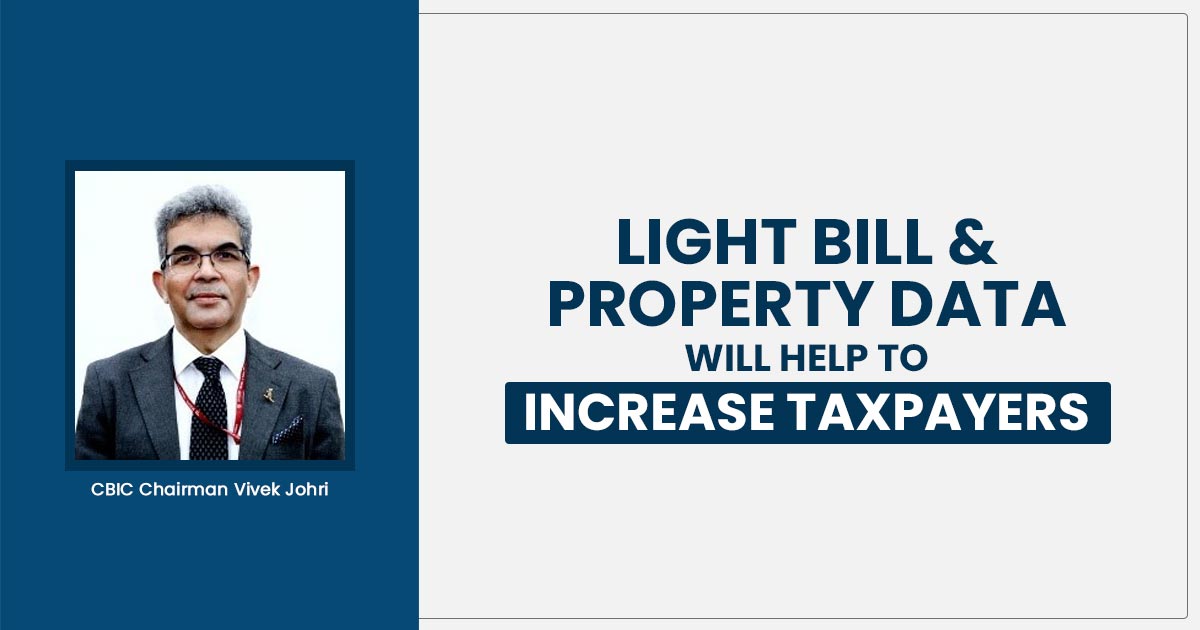
CBIC Chairman, Vivek Johri, for surging the base of goods and services tax (GST), the Central Board of Indirect Taxes and Customs (CBIC) shall utilize the information on electric meters and property tax.
The GST tax base was between Rs 45 and 50 lacks when it was first introduced, but it is now Rs 1.4 crore, according to Johri. The CBIC Chairman said, “We believe there is good potential for expanding the tax base.” To broaden the GST tax base, we will seek the aid of power distribution firms, collect data from electric metres, and also use information from property taxes.
The CBIC Chairman explained the board’s plan for the GST in an exclusive interview stating that while revenue collection is the goal, increasing the tax base is equally essential.
The number of Goods and Services Tax(GST) taxpayers is quite small when compared to other tax bases. With the use of analytics, we want to grow this in a very methodical and scientific manner. stated Vivek Johri.
The Finance Minister stated in this Budget that PAN will be taken into consideration as a standard corporate identity. We’ll benefit from this. We’ll use the power distribution firms’ distribution data as a resource. Data from property taxes will also be used, he mentioned.
If we look at the base of commercial premises, particularly in large cities, it gives us an indication that there is some business usage at such and such address, according to Johri, who cited property tax as an example.
Recommended: CBIC Chairman Expects Monthly GST Collection INR 1.50 Lakh Crore
He said, If we check that address against the PAN database, we may learn that he has already filed for income tax, and we will learn what sort of company he is engaged in from their database.
Accordingly, Johri claimed that if the databases were examined by carefully and intelligently filtering, then a prediction could be formed about who our possible future taxpayers who are not yet in our GST tax base are.
Johri remarked that business-to-consumer (B2C) commerce is a topic of concern in response to a query concerning retailers whose daily sales are in the millions but who do not issue receipts and do business in cash.
He said that some industries must be identified by CBIC. In certain industries, traders sell items for cash and do not provide receipts, which results in a loss of GST. We will need to talk with them about how to alter this behaviour. As it is not in the best interests of the nation or society, this has to change. We are thinking about the taxable operations, whether it is the central government or the state government.
The experiment involving VAT (value-added tax) in some states was that if you paid the bill, we would draw a lottery based on that bill, in order to motivate customers to come forward and request the bill. He also stated that they would move on with this work in specific industries.
The Chairman said We are also attempting to solve this through the services provided by our taxpayers. We run advertisements, and states do the same thing to alter customer behaviour.
He said that changes will be required for both consumers and taxpayers.
We must focus on B2C. In addition, we would want to inform our potential taxpayers about the advantages they would receive by participating in GST, Johri added, adding that we will finalise this by sitting down with the states. For instance, an input tax credit has many advantages. The advantages of growing their market are enormous.